|
DAVINCI - BAPTISM OF CHRIST - PAGE 3
|
King Minos of Crete |

|
|
There Minos stands |
- Minos was a mighty king and a great warrior.
- He ruled the powerful nation of Crete and was feared and respected by
all the neighboring countries in the Mediterranean.
-
Minos frequently appears on painted vases and sarcophagus bas-reliefs.
Because the haven was not suitable to winter in, the majority advised going to sea from there, if by any means they could reach Phoenix, and winter there, which is a port of Crete, looking northeast and southeast.
(Acts 27:12)
|
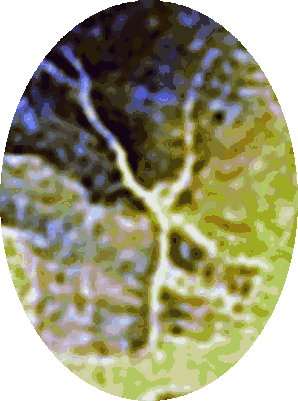
Zeus and Europa |
- Minos was the son of the Greek god Zeus and the mortal woman Europa.
- He
was married to Pasiphaë, a Phoenician princess, the daughter of Helios
(Sun), and they had several children:
Glaucus, Acacallis, Ariadne, Androgeus, Deucalion, Phaedra, Xenodice, and Catreus.
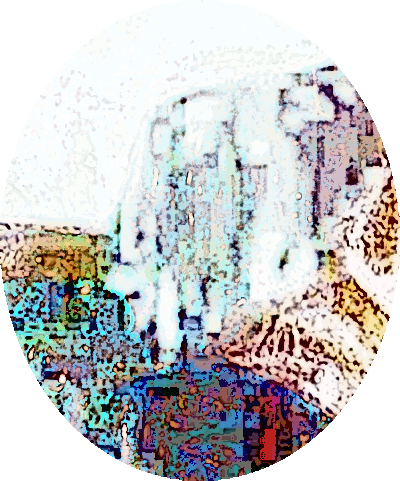
Palace at Knossos
with the Labyrinth below |
- Minos was known for his splendid labyrinthine palace at Knossos
that was built for him by the great Greek genius Daedalus.
O thou wall
That girdles in those wolves, dive in the earth
And fence not Athens!
(Shakespeare, Timons of Athens)
|
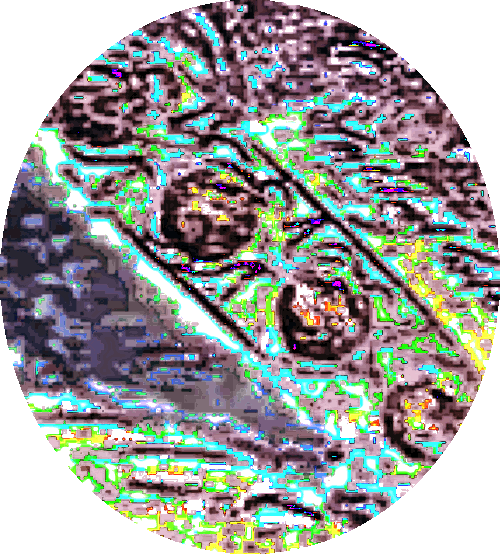
Heraldic rolling
stones |
- Many of Minos contradictory aspects, as well as
an explanation about how he ruled Crete for so many
generations, was rationalized by poets and
philosophers as the works of
2-3 separate kings.
- The name Minos means 'king.'
The middle of humanity though never knewest, but the extremity of both ends.
(Shakespeare, Timons of Athens)
|
|
Poseidon |

Favored by the gods |
- Minos obtained the throne through the
will of Poseidon and he is credited for colonizing the many
islands of the Aegean Sea.
-
When his kingdom was first established, Minos bragged that
the gods favored him and to prove it, he prayed to Poseidon
to send a great bull from the sea that he would return as a
sacrifice.
This is why I left you in Crete, so that you might
put what remained into order, and appoint elders in
every town as I directed you— if anyone is above
reproach, the husband of one wife, and his children
are believers and not open to the charge of debauchery
or insubordination.
(Titus 1:5)
|
|
Daedalus
|
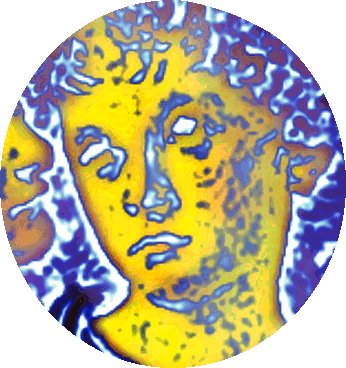
Artful craftsman |
- Daedalus
(Daidalos) was a mythical Greek architect, inventor and
sculptor.
- Daedalus had two sons: Icarus and Iapyx, from
his marriage to slave girl Naugrate, who was a gift from
Minos.
-
Two of his big achievements were construction of the
palace at Knossos and the Labyrinth beneath.
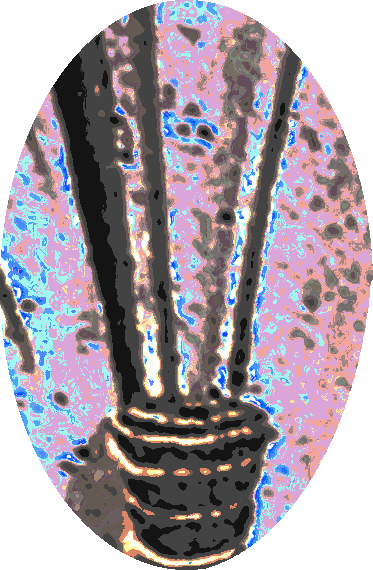
Ship mast |
- Daedalus also invented masts and sails for ships for the navy of King Minos
who established the first navy in the world.
- He carved statues so spirited they appeared to be living and
breathing.
- A specific sort of early Greek sculptures are named Daedalic sculpture in his honor.
Socrates: That if they [the images of Daedalus] are not fastened up they play truant and run away; but, if fastened, they stay where they are.”
(Plato, Meno)
|
|
Talos |
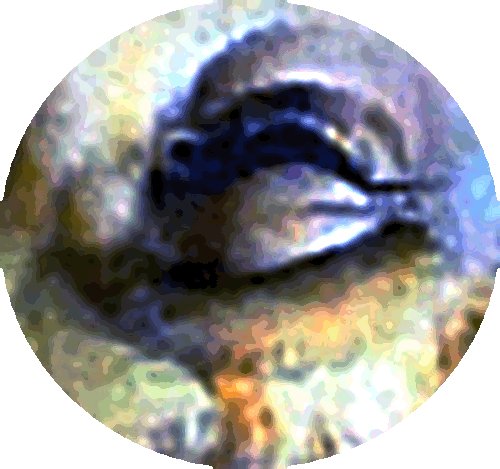
Daedalus' nephew |
- Before Daedalus arrived in Knossos he already had a sketchy
history.
- In a fit of envy he attempted to murder his nephew, Talos (Calos), and
his apprentice.
- Talos is usually said to have been made by Hephaestus as a gift to Minos, to protect his mother, Europa, from people who
wanted to kidnap her.
- Talos had one vein, which went from his neck to his ankle, bound shut by only one bronze nail
(brass casting).
Talos was a brass humanoid measuring 30m high,
who was forged by the god Hephaestus and was given to
Minos to protect the island of Crete against the
invaders. (Wikipedia)
|
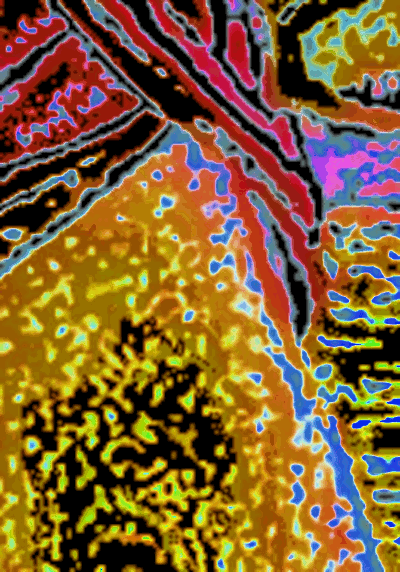
Talos the gift |
- Others claim that Zeus gave Talos as a gift to
protect Europa.
- Some say that the boy whom Daedalus had pushed off the edge of the Acropolis was not Talos but his sister's son Perdix, who was apprenticing to him.
- Daedalus was extremely jealous of Talos, and was
challenged and threatened when Talos knowledge began to
surpass his own.

Talos early version
of the saw with notches |
- Talos invented many things, including
the saw; after he took inspiration from a fish spine
he saw on the seashore and he took a piece of iron and
notched it on the edge.
- The ruler saw and measured
everything.
- He also invented the
compass.
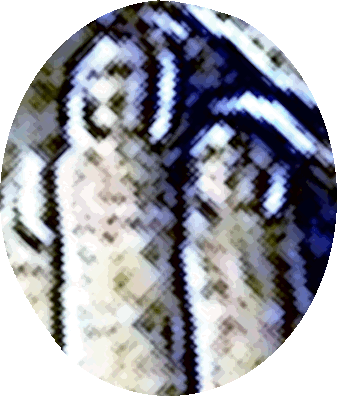
Daedalus' victims at
the Acropolis |
-
Seeing that Talos was on the path of becoming his equal or even his superior in technical skill and inventiveness, Daedalus felt threatened.
- Daedalus was so jealous he threw Talos and his
apprentice from the sacred hill at the Acropolis in an attempt to murder
them.
- Afterwards, Daedalus was
tried and convicted by Areios Pagus, the supreme court of
Athens, of attempted murder and banished from Athens to the
island of Crete.
What beast couldst thou be that were not subject to a beast?
And what a beast art thou already, that see’st not thy loss in transformation!
(Shakespeare, Timons of Athens)
|
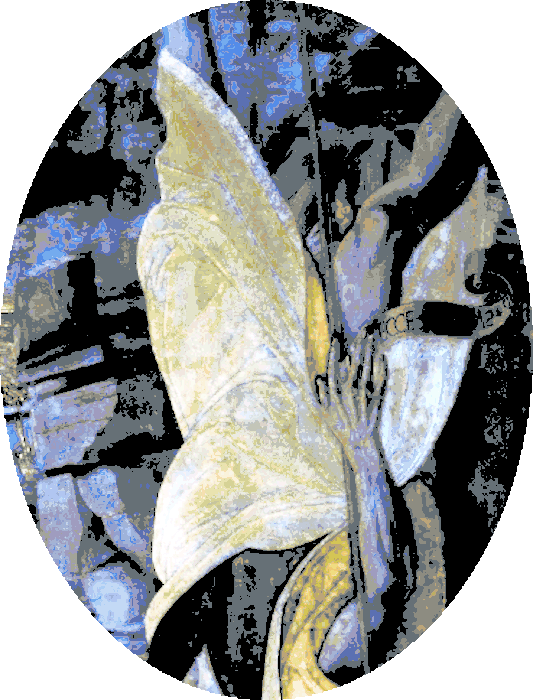
Talos escaped as a
partridge |
- Athena saved Daedalus' nephew, Talos, and turned him into
a partridge.
- Daedalus fled to Athens and was welcomed by King Minos and
his wife Pasiphaë in Crete where he became an important member
of his court.
- But soon enough he was embroiled in more trouble
at the palace.
Legend has it that this bird has since been known as the Partridge and wary of its tragic past avoids high places and nestles in hedges.
(greeka.com)
|
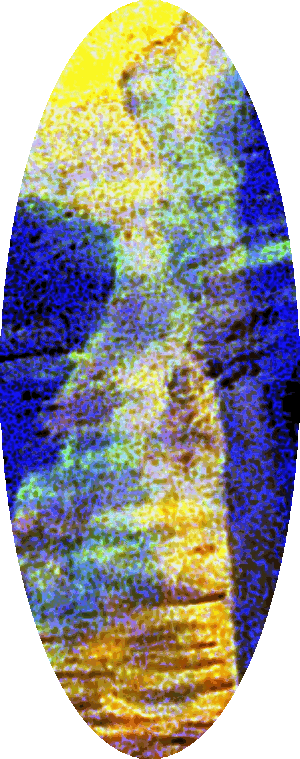
Talos throwing rocks
at the Argo from cliffs |
- When Jason and the Argonauts arrived in Crete, Talos
protected the island by throwing rocks at their ship, the
Argo, to keep it at bay.
- Although Jason used his spear
to unscrew a plug in Talos ankle that caused him to bleed
out and die (needed an oil refill).
|
Hydra |

Robotic |
- After encountering Talos, who was the first robot, Jason's
quest then moves on to a battle with the Hydra, who was
another robot, a nine-headed monster that regrew any heads
that were chopped off.
- The Lernaean Hydra was the monstrous offspring of Echidna, the mother of monsters, and Typhon, the most powerful of all monsters in Greek mythology.
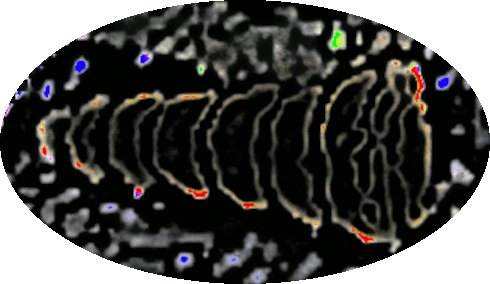
Hydra head removed |
- Hydra was placed into the care of Zeus' wife Hera, who
used him for the demise of Hercules.
- Except the roles
reversed and Hercules chopped
off Hydra's one mortal head and finally killed him after a
long battle.
- Of course it's hard to find
information about Hydra because all that's out there are
stories about robotic movie props.
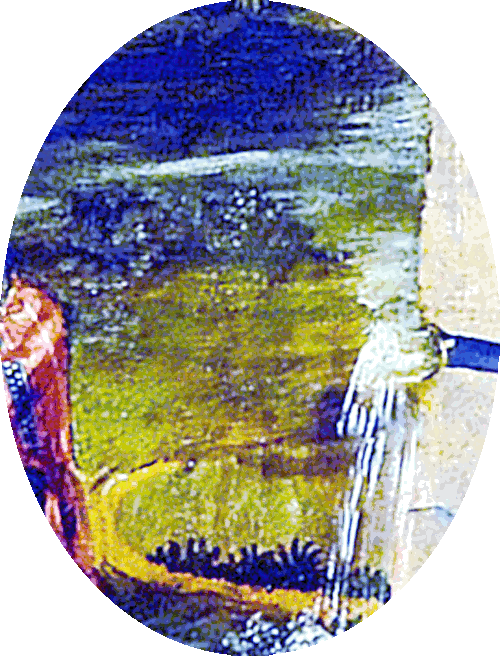
King Minos harshness |
-
King Minos had a strong character and was not very well liked
because he was harsh and exploited his subjects.
- He
grew into a cruel tyrant and was greatly feared.
- Minos
had the special privilege of speaking with Zeus every nine
years, and because of the lessons he received he gained much
praise.
- He received all his laws directly from Zeus.
Every man has his fault, and honesty is his.
(Shakespeare, Timons of Athens)
|
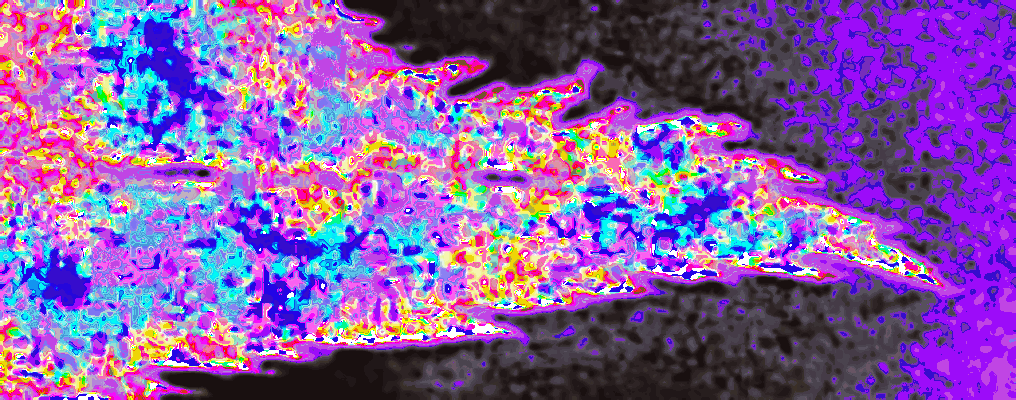
Lock of purple hair |
-
One of King Minos' most famous victories was against King Nisus of Megara,
which at first seemed impossible to Minos.
- This was because the
King of Megara had a magical lock of purple hair, and as long he had it in his possession, his city could not be
assaulted.
- Like Samson, his power and protection was in his hair.
|
Scylla |
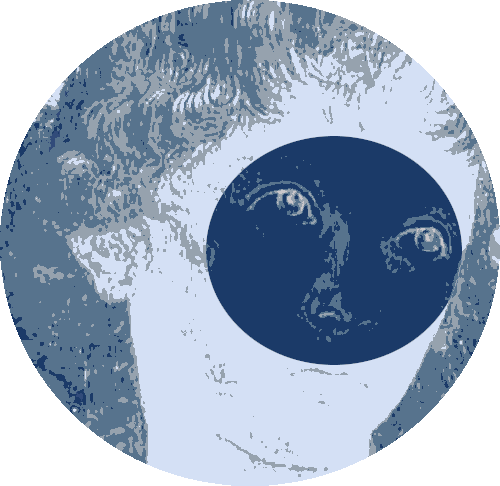
Daughter of King
Nisus |
- King Nisus had a daughter named Scylla, who was
unknowingly named after a nymph in Greek mythology who changed into a monster and terrorized mariners.
- Kind of an accident.
|
King Minos
|

In the
garden |
- One day Scylla spotted King Minos over the
garden wall and she fell desperately in love with him.
-
Minos was delighted because he wanted to get close to her
father's magic hair but he had no interest in her love.
-
Scylla cut off a lock of her father's
magical hair and snuck out of the palace with the intent of
giving it to her beloved, King Minos.
For an overseer, as God's steward, must be above reproach. He must not be arrogant or quick-tempered or a drunkard or violent or greedy for gain, but hospitable, a lover of good, self-controlled, upright, holy, and disciplined. He must hold firm to the trustworthy word as taught, so that he may be able to give instruction in sound doctrine and also to rebuke those who contradict it.
(Titus 1:6-9)
|

King Minos in his
battleship |
- Minos
went into battle with Nisus at the same time Nisus daughter
betrayed her own father.
- King Nisus kingdom was no
longer protected because his magical hair was stolen.
-
On top of that, he only had one lock of purple hair because
the rest of his hair was white.
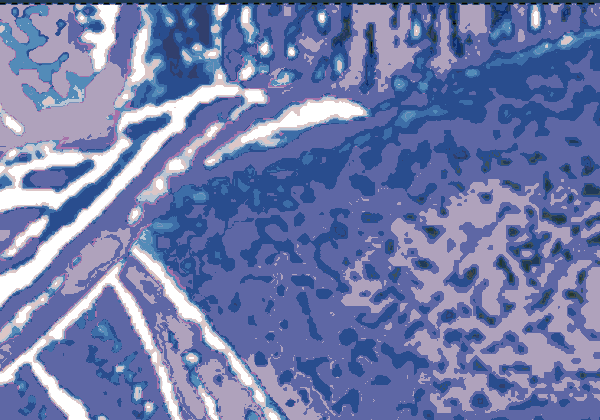
Nisus the ghost of a
falcon |
- In the end, Minos won the battle and killed Nisus, but he was so sickened by Scylla's treachery
to her father, that he sailed away without her.
- Plus,
he was done using her.
- Scylla tried to swim after him,
but her father's ghost swooped down and drowned
her.
One of the Cretans, a prophet of their own, said, “Cretans are always liars, evil beasts, lazy gluttons.”
(Titus 1:12)
|
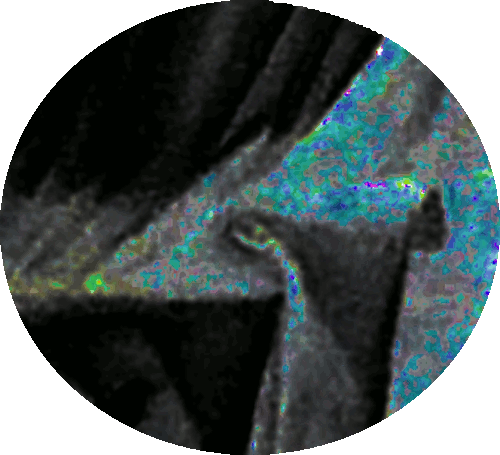
Scylla bird |
- Scylla was changed into a shearer bird, relentlessly pursued by her father, who was a falcon.
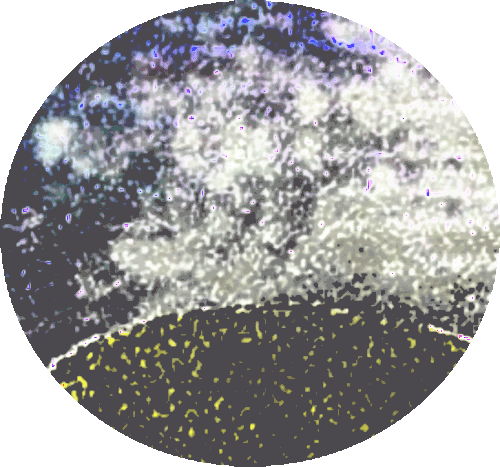
White bull arrives |
- Although he was a great man, Minos had many character flaws.
-
One day a magnificent white bull appeared in his kingdom and
the god Poseidon, king of the sea, demanded that the bull be sacrificed to him,
especially since Minos already promised he would do that.
The sea god, impressed with Minos' devotion, had sent him a snow-white bull as an omen that he should be ruler supreme. (greeka.com)
|
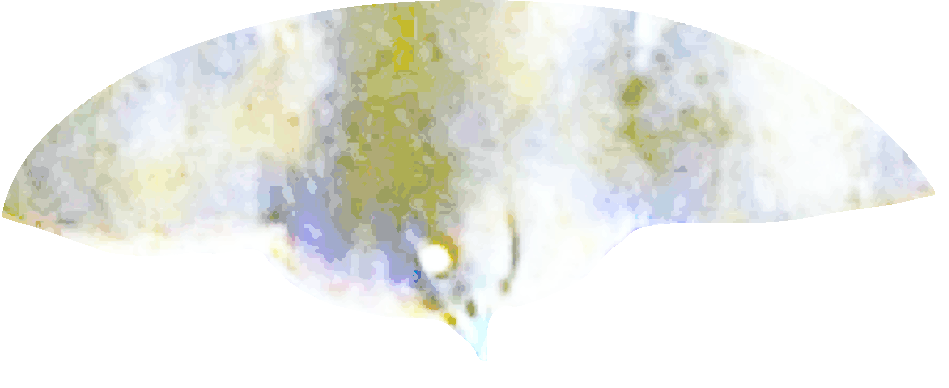
White dove departs |
-
However, Minos thought it was such a fine bull that he decided to keep it for himself and sacrifice another animal
instead.
|
Pasiphaë |
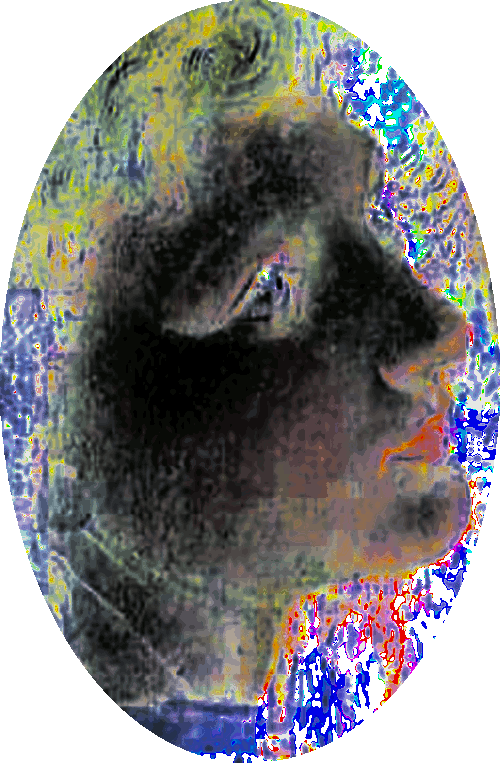
In heat |
- The king didn't think anyone would notice the
substitution, however, the gods were angry, and decided to punish Minos.
Her eyes of bright unwinking glaze
All imperturbable do not
Even make pretences to regard
The justing absence of her stays,
Where many a Tyrian gallipot
Excites desire with spilth of nard.
The bistred rims above the fard
Of cheeks as red as bergamot
Attest that no shamefaced delays
Will clog fulfilment, nor retard
Full payment of the Cyprian's praise
Down to the last remorseful jot.
Hail priestess of we know not what
Strange cult of Mycenean days!
(Aldous Huxley, Minoan Porcelain)
|
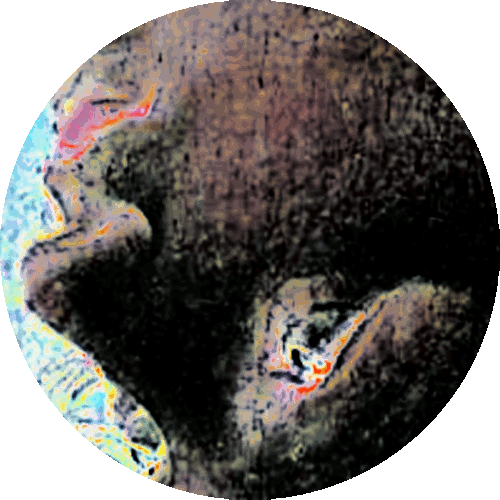
Supraventricular lust |
- As revenge, Poseidon, with the help of Aphrodite, made
King Minos's wife, Pasiphaë, lust after the bull.
- They
accomplished this by casting a black magic love curse on
her.
- She was a victim of her husband's greed and
arrogance.
The stronger the emotions we feel to certain
problems and conditions in our life, the more we pay
attention to them, so we give our power away to that
big problem and that's creative energy we should be
able to use to create our future, now the person's
back in the past. (Dr. Joe Dispenza)
|

Mechanical cow
|
- Mad with desire, she sought the help of inventor Daedalus, who created a mechanical cow in which she could hide
when she mated with the bull.
|
If they become aware that they're siphoning energy
out of the present moment into the past and they
settle the body back down into the present moment,
that's a victory, and those victories add up, because
you're telling the body in that moment that it's no
longer the mind, that you're in the meditation and you
bring it back to the present moment and settle the
animal down.
(Dr. Joe Dispenza)
|
|
Minotaur |

Asterion |
- As a result of her union with the bull, a few months
later, she gave birth to a monstrous creature she named
Asterion.
- It had the head of a bull and the body of a man and was
called a Minotaur.
- This is considered one of the
most shocking stories in Greek mythology except it's not
really shocking because it's not what it seems.
- This
monster in truth was the son of Pasiphaë, Minos' wife, but
not by the King.
Pasiphae joyed in adultery with the bull. (Ovid)
|
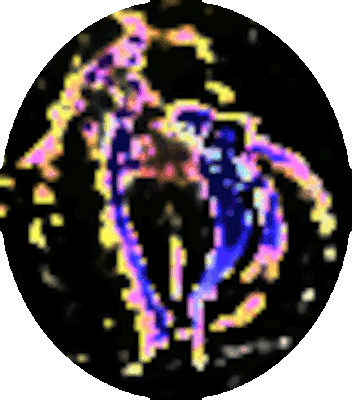
Asterion as a child |
- As a child Asterion was given the freedom of King Minos’
palace at Knossos, but as he grew older he became wilder and
more savage.
- Eventually it became unsafe to allow him inside the palace.
- Over the years, the Minotaur grew into a fearsome flesh-eating monster.
The asterion is an anatomical landmark on the lateral aspect of the skull formed at the junction of the occipital bone, the temporal bone, and the parietal bone. (ncbi.nlm.nih.gov)
|
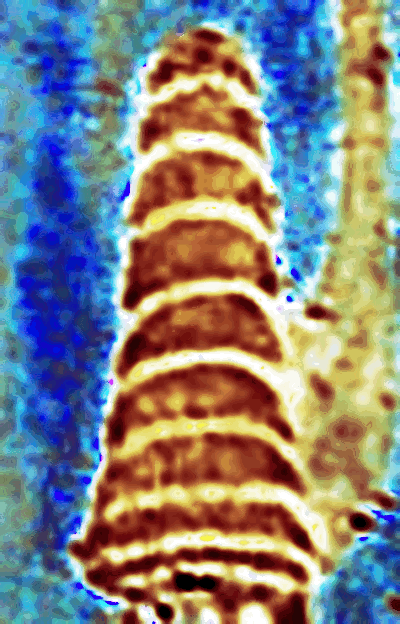
Daedalus' tower |
- Minos was increasingly horrified over the years as
everything unfolded.
- Ashamed at his wife's deed, Minos wanted to hide the monster which was growing violent and gigantic day after day.
- Daedalus was responsible, from his
view, for destroying his life; he created the bull that
ruined his wife.
-
But even worse than that, the Minotaur was a living reminder of Minos’ defiance of the gods and
Pasiphaë’s great sin.
- In fury he imprisoned Daedalus in
a tower.
- The question remains, who is the Minotaur's
real father?

Minotaur in the
Labyrinth |
- While trapped in the tower, the king had Daedalus design the
Labyrinth so he could imprison the dangerous Minotaur there.
The name Daidalos seems to be attested in Linear B, a writing system used to record Mycenaean Greek. The name appears in the form da-da-re-jo-de, possibly referring to a sanctuary. (Wikipedia)
|
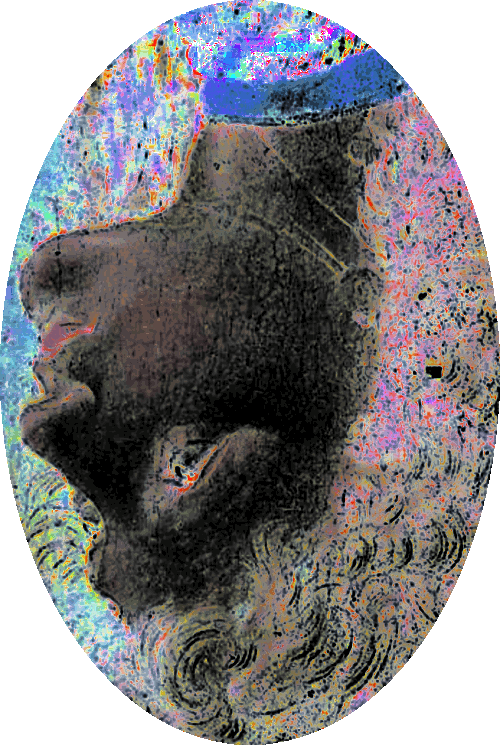
Labyrinth
|
- He built a gigantic Labyrinth which was a maze with only
one entrance and it was impossible to find the exit once
inside.
- Minos didn't want anyone to know the secret of
the Minotaur and how to get out of the Labyrinth.
-
Daedalus was the only one who knew both these things which
was the main reason Minos wanted to imprison him.
A chamber that with its tangled windings perplexed the outward way. (Wikipedia)
|
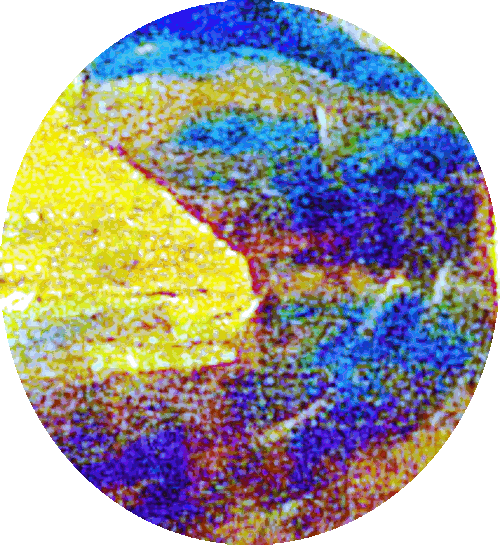
Dancing floor
construction |
- Daidalos also designed a dancing floor for
Minos daughter Ariadne which
was part of the Labyrinth.
Ovid, in his Metamorphoses, suggests that Daedalus constructed the Labyrinth so cunningly that he himself could barely escape it after he built it. (Wikipedia)
|
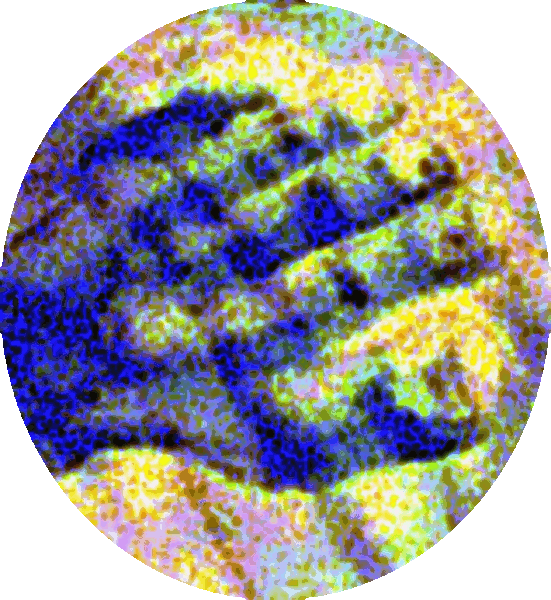
Minotaur
Labyrinth foot print |
-
Once the Labyrinth construction was complete, Minos imprisoned the beast in the maze beneath his palace.
- Inside the Labyrinth, the Minotaur was fed through holes
in the roof of the maze.

Daedalus hands on
his son Icarus |
- Keeping the brilliant genius captive proved impossible as
Daedalus was always inventing and building things out of
scrap materials he found laying around.
- He was a
hands-on guy.
- Daedalus could not escape by
sea because Minos had all departing ships searched.
“He may thwart our escape by land or sea’ he said ‘but the sky is surely open to us: we will go that way: Minos rules everything but he does not rule the heavens’.” (Ovid,
Metamorphoses VIII)
|
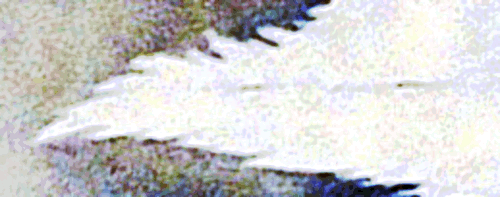 |
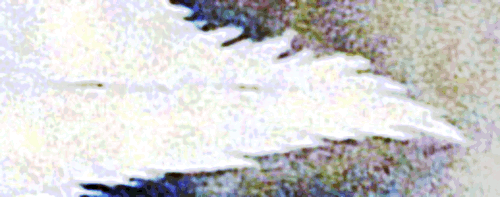 |
|
Daedalus wings |
- While imprisoned, Daedalus studied the movement of birds very carefully.
- He knew his only chance of escape was the sky since Minos
was guarding the land and sea so diligently.
- Using beeswax, thread and various sized feathers,
he created two pairs of wings; one for himself and one for his son, Icarus.
- Daedalus was apprehensive about his son's safety and
warned him about dangers he may face if he wasn't careful.
Let me warn you, Icarus, to take the middle way, in case the moisture weighs down your wings, if you fly too low, or if you go too high, the sun scorches them. Travel between the extremes. (Ovid,
Metamorphoses VIII)
|
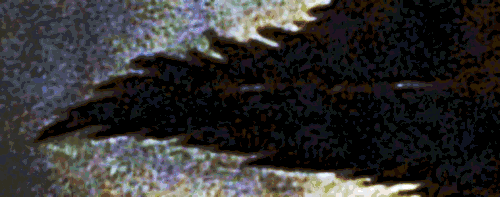 |
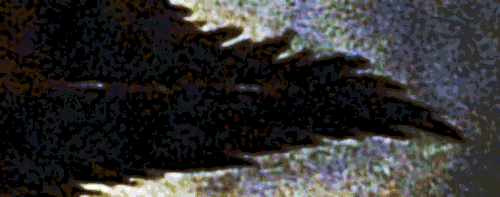 |
|
Icarus wings |
- Daedalus and Icarus used the wings to escape the tower and fly away over the sea.
- However, Icarus became too bold in his excitement, and despite his father's warning, he flew too close to the sun.
Ovid writes that a plowman, a shepherd, and an angler saw Daedalus and Icarus flying from the distance and believed them to be gods, a scene famously depicted in Brueghel the Elder’s Landscape with the Fall of Icarus. (thecollector.com)
|

Icarus melts and
falls to Earth in
Roam |
- The sun's heat melted the beeswax which held his wings together, and he plummeted to his death in the sea.
Icarus kept flapping his "wings". But he realized he had no feathers left. He was only flapping his featherless arms. The feathers—one by one—fell like snowflakes, and down, down, and down he went into the sea (where he sank to the bottom and drowned). (Wikipedia)
|

Icarus buried |
- Daedalus buried Icarus on the shore of the Aegean Sea
which is called 'Mare Icarium' or the Icarian Sea.
- Ironically, a partridge, said to be Talos, mocked
Daedalus as he buried his son.
When they had been long without food, Paul stood up in the middle of them, and said, "Sirs, you should have listened to me, and not have set sail from Crete, and have gotten this injury and loss.
(Acts 27:21)
|
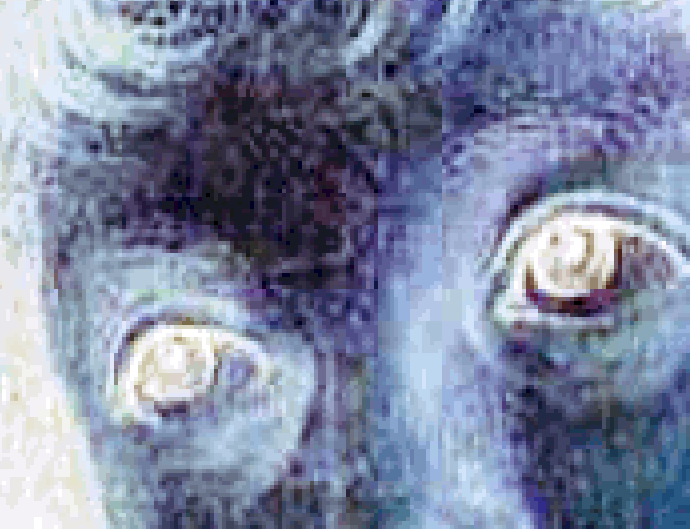
Daedalus hiding
in grief |
- The grief-stricken Daedalus made his way to the Greek mainland, where he quickly hid himself.
I am not of that feather to shake off My friend
when he must need me. (Shakespeare, Timon of Athens)
|
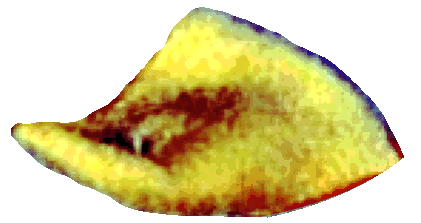
Daedalus evades
capture |
- Despite all, the genius Daedalus revealed himself to Minos
and once again, he still managed to evade capture.
-
Eventually he landed in Sicily where he built a temple to
Apollo and his crafted wings were placed there.
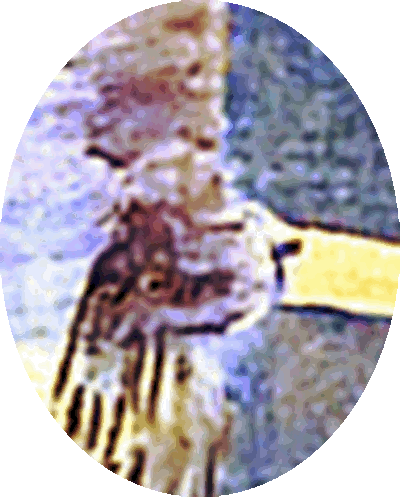
Minos in Attica |
- Back in Attica, Minos was angered and asked Zeus to punish
the city.
- Zeus struck the city with famine and plague
and an oracle warned the citizens to obey Minos if they
wanted to escape his punishment.

Minos demands
sacrifices
|
-
Minos used the Labyrinth to reign over the city of Athens using fear.
- Not long after, King Minos only son, Androgeus, was killed in a battle against Athens,
although Minos did win the skirmish.
- He was was so
torn apart by grief and hatred that he demanded a terrible tribute
of sacrifice.
The sun’s a thief, and with his great attraction
Robs the vast sea. The moon’s an arrant thief,
And her pale fire she snatches from the sun.
The sea’s a thief, whose liquid surge resolves
The moon into salt tears. The earth’s a thief,
That feeds and breeds by a composture stol’n
From gen’ral excrement; each thing’s a thief.
(Shakespeare, Timons of Athens)
|
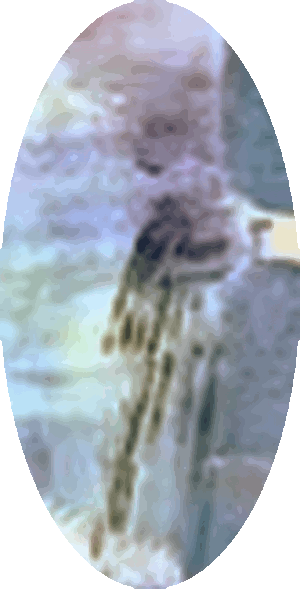
Sacrifice prisoner |
- Every 7-9 years, Minos demanded that 14
young Athenians be sent to his palace for sacrifice to the
Minotaur.
- This went on for several years.
|
Prince
Theseus |

Athens |
- The son of King Aegeus of Athens, Prince Theseus, was so appalled
by the antics of the Minotaur, that he volunteered as one of the
14 sacrifices.
- His plan was to try to slay the monster
before anymore sacrifices were made.
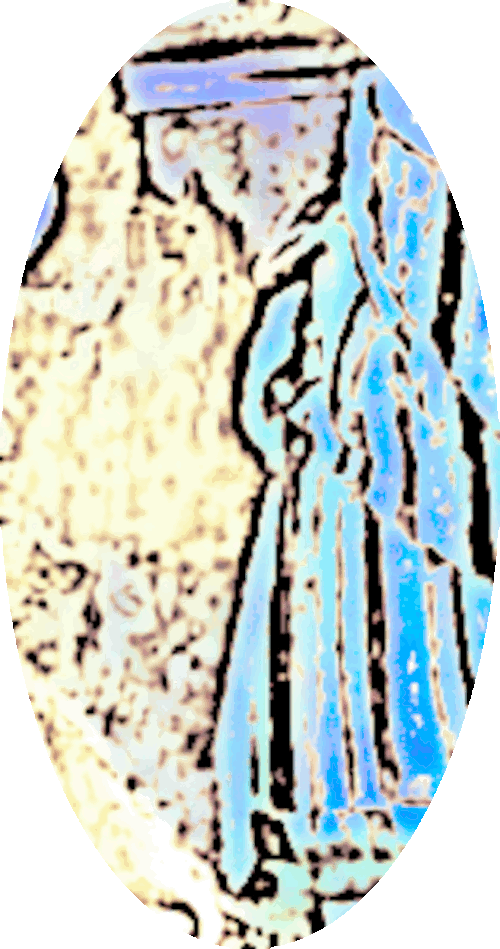
King Aegeus of
Athens |
- King Aegeus was very afraid for his son and feared the
worst.

Black-sailed ship |
- As the black-sailed ship carrying the sacrificed youths left for Crete,
the king told the sailors that when they returned, they were to hoist white sails if Theseus had survived, and to keep them black if he had been killed.
|
Ariadne |
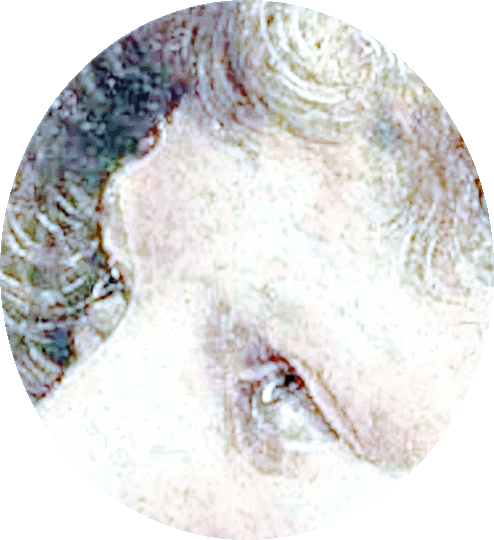
In love and
compassionate |
- When Theseus arrived in Crete, Minos' daughter Ariadne saw him among the victims and fell in love with him.
- Daedalus gave Ariadne the clue as to how to escape the
Labyrinth.
- Ariadne told Theseus she would help him defeat the Minotaur if he would promise to take her home and marry her.
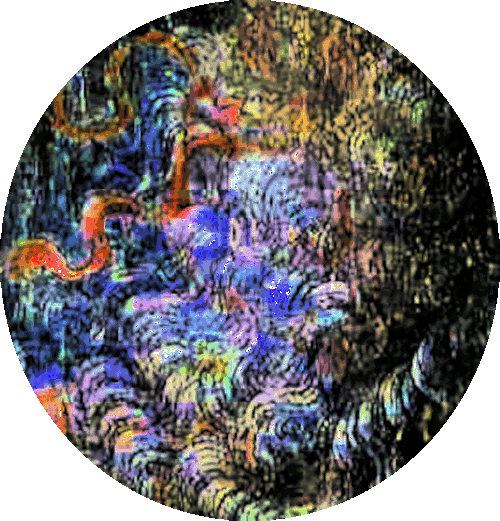
Magical twine |
- Theseus agreed, and she gave him a magical ball of twine to guide him through the maze where the Minotaur lurked.
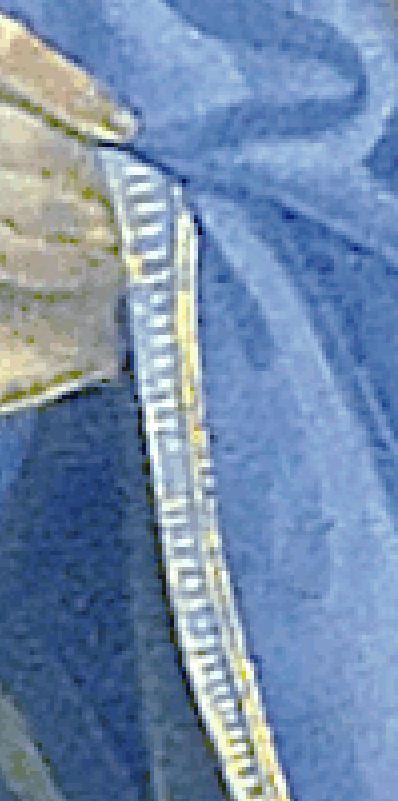
Unwound twine path |
- On the day he embarked on his journey, Theseus, tied one
end of the string at the entrance of the Labyrinth.
- With the help of the twine, which unwound before him to show him the way, he soon found the beast.
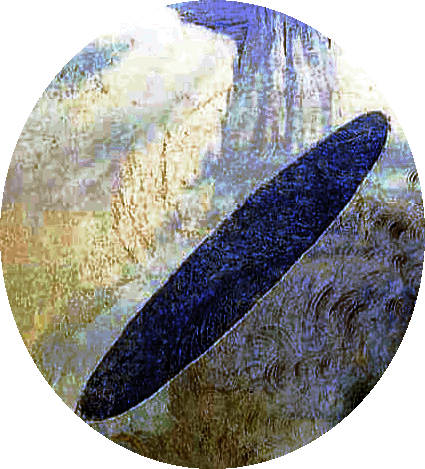
Theseus beats up the
Minotaur |
- After a long and fierce battle, Theseus finally killed the
Minotaur with a knotted club.
- Following his path backwards, that was so handily marked by the magic twine,
Theseus led the other young Athenians out of the maze to safety.
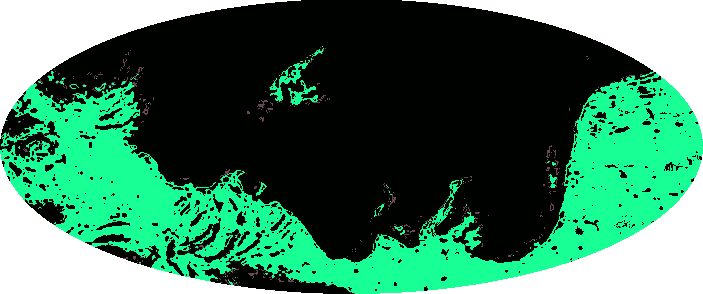
Ariadne's betrayal
(for the good of all) |
- Theseus and Ariadne quickly left Crete after the
Minotaur's demise and shortly after, King Minos realized he
had been deceived by his daughter.
- And that she aided
his mortal enemy, Theseus, from Athens.
- Also, that once
again, Daedalus was involved with the treason.

Minos distracted by
hate |
- Minos should have been
relieved that the Minotaur was no longer a threat, but he
didn't seem too concerned about that.
- Ariadne did not know that the hideous monster was actually her half-brother, as Minos had kept this a secret from
everyone except Daedalus.

Escaping the island
by boat |
- The sacrifice victims from Athens escaped the island by boat
with Theseus, taking Ariadne with them.
O, that Androgeos were still alive, and that thou, O Cecropian land [Athens], hadst not been made to atone for thy impious deeds with the doom of thy children! And would that thy upraised right hand, O Theseus, had not slain with knotty club him that was man in part, and in part bull; and I had not given thee the thread to show the way of thy return–thread oft caught up again and passed through the hands led on by it. I marvel not–ah, no!–if victory was thine, and the monster smote with his length the Cretan earth. His horn could not have pierced that iron heart of thine.
(Ovid)
|
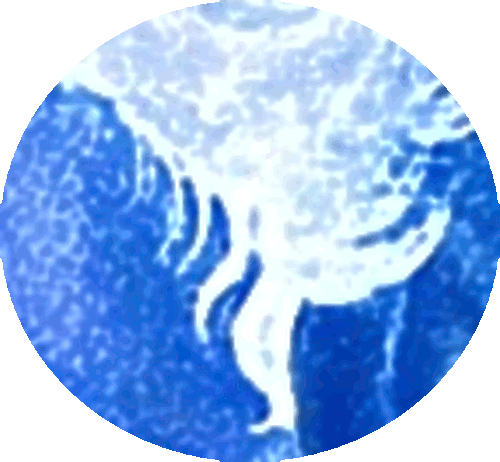
Theseus runs away |
- However, on their way back to Athens they stopped off at the island of Naxos, where the ungrateful Theseus abandoned
Ariadne.
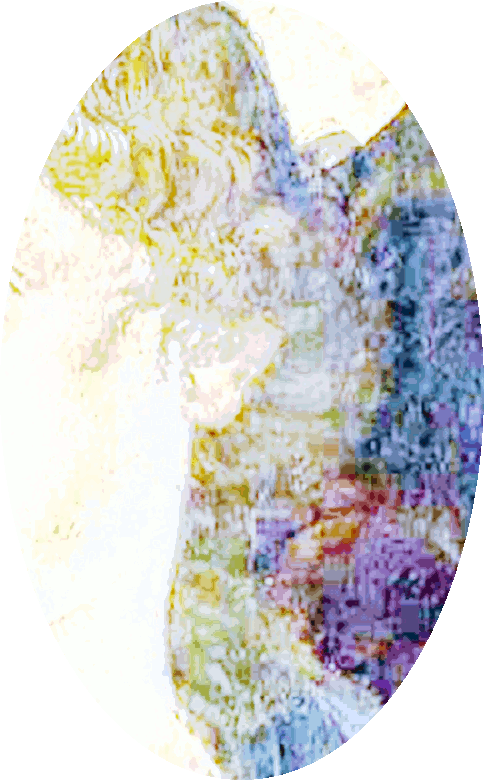
Ariadne marries
Dionysus |
- Realizing she had been deceived, Ariadne cried to the gods for vengeance.
- She was heard by the god Dionysus, who instantly fell in love with her.
- They eloped and Dionysus made Ariadne his wife.
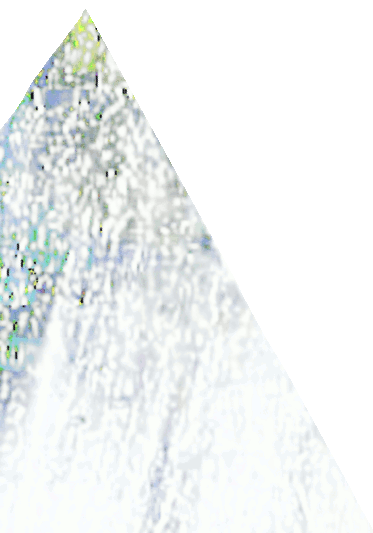
White sail forgotten
with Ariadne's help |
- With the help of her husband, Ariadne got her revenge on Theseus by making him forget to change the sails from black to white as he returned home.
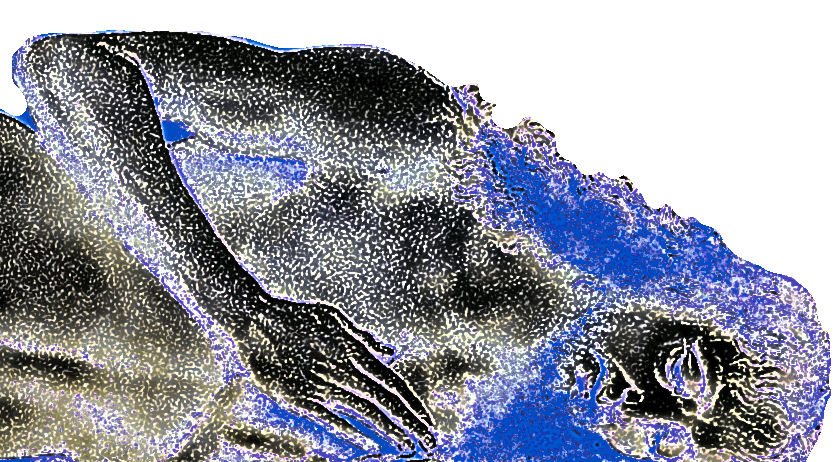
King Aegeus consumed
by grief |
- King Aegeus saw the black-sailed ship and was consumed by grief, thinking his son was dead.
- In his despair he threw himself into the sea and drowned.
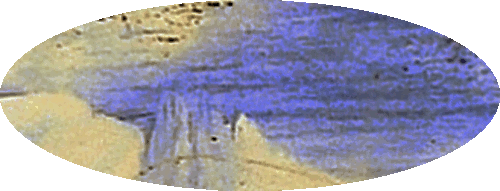
Aegean Sea |
- Today, the stretch of water where King Aegeus drowned is still known as the Aegean Sea.

Prince is rattled |
- Prince Theseus' troubles did not end there.
- He married
his first wife, Hippolyte, and she died.

Phaedra throws a
tantrum |
- Next he married Phaedra, the second daughter of King
Minos and she was very jealous of the love he showed his son
Hippolytus by first wife Hippolyte.

Poseidon stirs up
tragedy |
- Phaedra accused Hippolytus of attacking her, and Theseus was so angry that he asked Poseidon to punish the young man.
Among whom are Hymenaeus and Alexander, whom I have handed over to Satan that they may learn not to blaspheme.
(1 Timothy 1:20)
|

Beach scene |
- One day when Hippolytus was driving his chariot along the beach, Poseidon sent a great wave which terrified the horses into bolting.
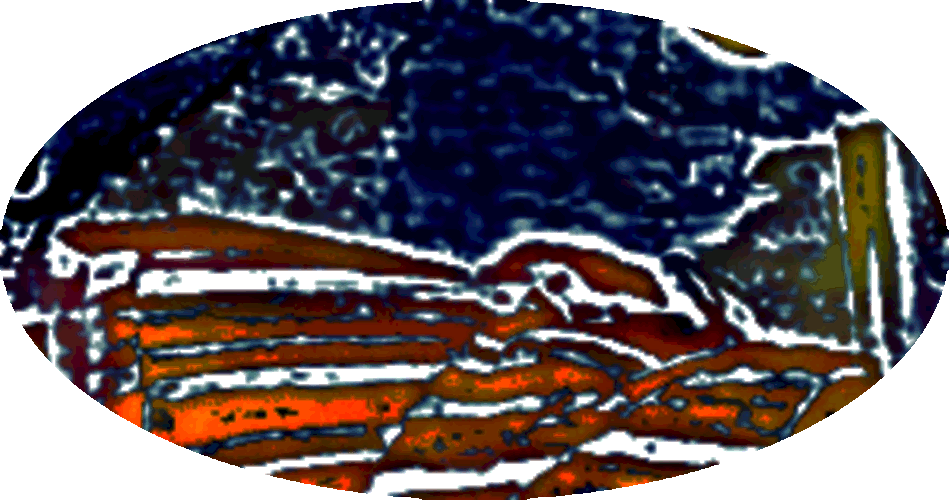
Hippolytus thrown
from his chariot |
- The chariot crashed and Hippolytus was thrown
from his chariot and died instantly.
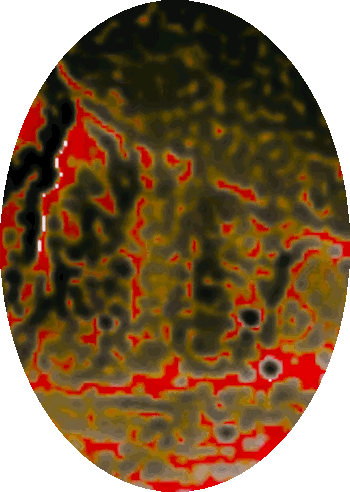
Phaedra escapes
wrath |
- When Theseus then discovered that Phaedra had lied to him, he was furious.
- The terrified woman hanged herself to escape his wrath.
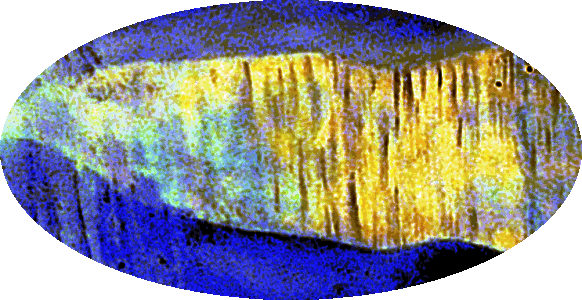
Triton shell |
-
Minos returned to Crete after he failed to find Theseus and
Ariadne.
- Back in Crete, Minos was dismayed when he
discovered that prisoner Daedalus had escaped and this
angered him even more than Ariadne's actions.
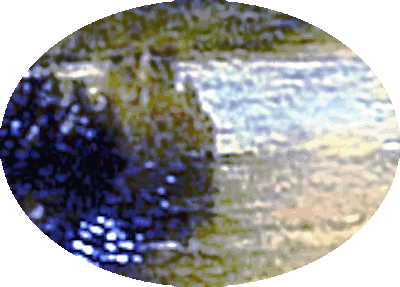
City |
- Minos devised a plan to recapture Daedalus and he traveled from city to city and presented a
riddle.
- He issued a challenge to the Greek kings, to see if any of them could pass a string through a Triton shell
without breaking it.
- Anyone who succeeded would
receive great riches that were promised by Minos, however, all the kings failed
the riddle.

Spiral shape
interior of the
nautilus
shell |
- This task was thought to be impossible, due to the spiral shape of the shell, but Minos knew that if anyone could do it, it was Daedalus.
- Minos believed his clever plan would be able to flush Daedalus out of
hiding because he loved mental challenges and riddles so much.

Shell for Daedalus |
- After burying Icarus, Daedalus traveled to Camicus in Sicily, where he stayed as a guest under the protection of King Cocalus.
- While there, he built the Acropolis of Camicus, an
artificial lake, and hot baths with healing properties.
- When
King Minos reached Camicus, King Cocalus, knowing Daedalus would be able to solve the riddle, accepted the shell and gave it to
him.
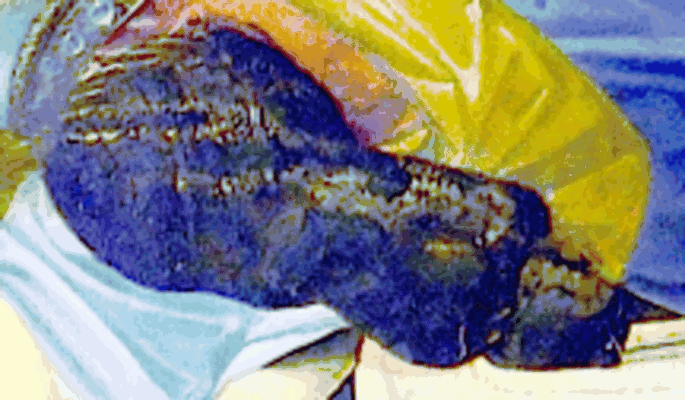
Busy ant finds honey |
- King Cocalus neglected to tell Daedalus the challenge
was from Minos because he knew Daedalus would refuse to
solve it and Cocalus wanted the riches.
- Daedalus rose to the challenge and quickly solved the
problem.
- He put a drop of honey on one end of the
shell.
- Then tied the thread to an ant, which then crawled through the shell, drawing the string along behind it,
until it came out the other end where the honey was.
Paul, an apostle of Christ Jesus by command of God our Savior and of Christ Jesus our hope.
(1 Timothy 1:1)
|
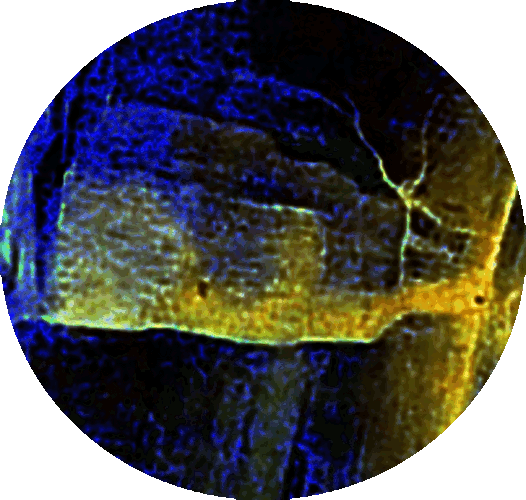
Too busy finding the
way |
- Very similar to how Theseus found his way through the
Labyrinth (with help, cheat codes).
- Watch out A
students because you'll end up working for the C students --
always.
- What is memorization worth compared to
creativity.
Like madness is the glory of this life.
(Shakespeare, Timons of Athens)
|
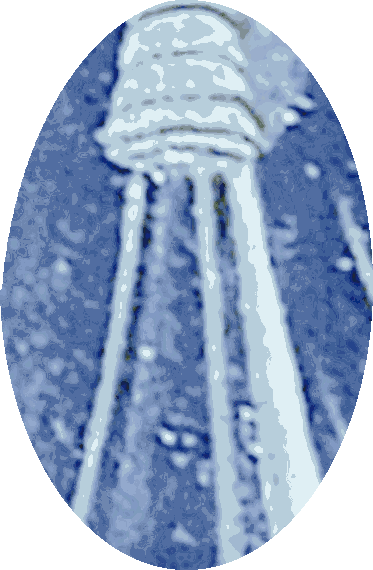
Bath water |
- Minos realized that Daedalus was in King Cocalus' kingdom
and demanded that his servant Daedalus be turned over to him.
- He also understood the real reason both Daedalus and Theosis
were able to find easy victory.
- Cocalus
agreed, but only if Minos agreed to take a bath.
-
While he was in the bath, Cocalus' daughters killed Minos (or
possibly Cocalus himself did), by pouring boiling water (or tar) over King
Minos body.
With the powerful Cretan fleet anchored off of his kingdom, Cocalus seemed to have no choice but to agree to the demands of King Minos. The daughters of King Cocalus had a different idea though, for they had no wish to lose the man who made them such fine gifts. (greeklegendsandmyths.com)
|
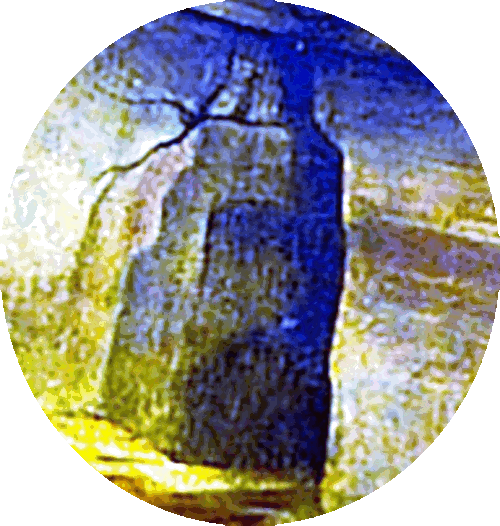
Diodorus Siculus
acorn |
- According to Diodorus Siculus, Cocalus then announced that Minos had died by slipping in the bath and that he should be given a great funeral.
- He spent a huge fortune on the festivities and the Sicilian
king was able to convince the rest of the world that it was truly an accident.
Now, thanks to the work of Daedalus, Sicily had flourished. Cocalus was not willing to give him up. (historycooperative.org)
|

King Minos
and his icon in the
underworld |
- Daedalus lived out his life on Crete and created many
sculptures and architectural features throughout the island
although he may have also spent time in Sardinia in the
company of Iolaus.
- After his death, Minos became a judge of the dead in Hades together with his half-brother Aeacus and his brother Rhadamanthus.
In Michelangelo's famous fresco, The Last Judgment (located in the Sistine Chapel), Minos appears as a judge of the underworld, surrounded by a crowd of devils. With his tail coiled around him and two donkey ears (symbol of stupidity), Minos judges the damned as they are brought down to hell.
(Wikipedia)
|

Ghost of King Minos
in Crete |
- From excavations in Crete, many scholars consider Minos as
a royal or dynastic title for the priestly rulers of Minoan
Knossos during the Bronze Age.
- Visitors to Crete can still visit Knossos, the fabulous Minoan palace where these fantastic adventures are said to have taken place.
I do proclaim one honest man.
Mistake me not, but one;
No more, I pray, and he’s a steward.
How fain would I have hated all mankind,
And thou redeem’st thyself.
But all save thee I fell with curses.
(Shakespeare, Timons of Athens)
|
- Minos also appears in Dante’s Inferno
and sits at the gate to the second circle of Hell and decides which circle a sinner belongs to.
- He has a tail that wraps around himself and he uses it
to judge what level the sinner will be placed in depending on
how many times his tail circles.
Humility is the fear of the LORD; its wages are riches and honor and life. In the paths of the wicked are snares and pitfalls, but those who would preserve their life stay far from them.
(Proverbs 22:4)
|

King Minos in Hades
- Electromagnetic coil CIA |
- In the Divine Comedy Minos is located in Hell at the entrance of the second circle because the souls in Limbo, situated in the first circle, have no sins to confess and are not judged.
- The interior of the hour glass shape was red near the north pole and blue near the south pole.
- There seemed to be some distortion depending on which pole of the magnet was pointed toward the earth's north pole.
- Thank you for pointing this out Leonardo.
- Watch: Right hand thumb rule (& solved numerical).
- True north.
- Make sure you sleep with your head facing
what they call South.
The north-seeking pole of a magnet was defined to have the north designation, according to their use in early compasses. Because opposite poles attract, this means that as a physical magnet, the magnetic north pole of the earth is actually on the southern hemisphere.
(Wikipedia)
|
The figure of Minos is emblematic of a process very common and often present in the Divine Comedy: some characters of classical mythology are transformed into demons once assimilated by Christian culture. This was very common in medieval tradition, as it was in the works of Dante.
(florenceinferno.com)
|
Moral of the myth!
- Minos should have walked away from his greed and
hate and now he is permanently stuck and utterly
bloody death and loss of mind.
- These people are too emotional.
- We have to use our brains to outsmart those in authority because we cannot out-match them in strength,
and no, they are not always right, especially if they
are tyrants like Minos.
|
|
Minoan and Mycaenean Civilization |
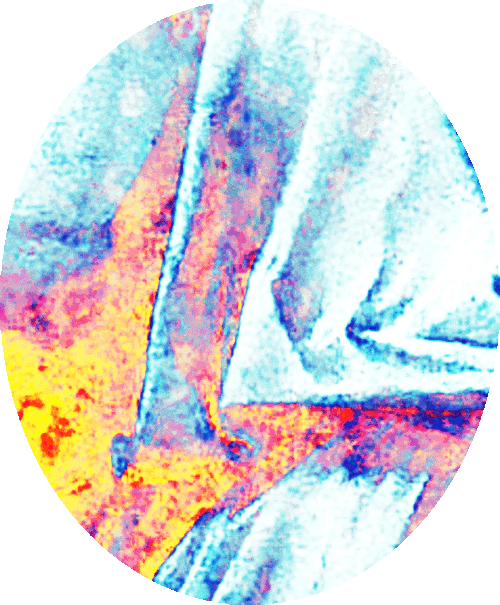
First advanced
civilizations in Europe |
- The Minoan Civilization was a period of time during the
Bronze Age roughly 3500-1100 BC.
- During this period,
the Greek island of Crete became one of the most important trade and political
centers in the world.
- The Minoans built their culture
based on trade.
When the south wind blew softly, supposing that they had obtained their purpose, they weighed anchor and sailed along Crete, close to shore.
(Acts 27:13)
|

Aqueduct and
plumbing systems |
- The term 'Minoan' was penned by archeologist Arthur Evans
in 1900.
- Evans worked on the lost palace of Knossos in
Northern Crete for 30 years.
- The Minoan culture was
highly advanced and four-story buildings were common in
Knossos.
- As a city, Knossos had well-developed aqueduct
and plumbing systems.
The Minoan civilization was completely unknown to modern historians until the end of the 19th century, when Minos Kalokairinos, a Cretan archaeologist, performed some excavations. This work was built upon by British archaeologist Arthur Evans, who was astonished by the things he found.
(kinnu.xyz)
|

Mainland |
- The Minoans and the Mycenaeans were two of the early civilizations that developed in Greece.
- Minoans lived on the Greek islands and built a huge palace on the island of Crete.
- Mycenaeans lived mostly on mainland Greece and were the first people to speak the Greek language.
- The Mycenaeans culture developed because of war and
conquest although they were no strangers to trade.
- A third group called the Cypriots lived on Cypress.
The waning of Minoan influence and waxing of Mycenaean dominance has been observed from the archaeological evidence, and the close connection between the two cultures is represented in similarities in the architecture of the palatial complexes, burial practices, and the transmission of iconography and goods from Crete to the mainland.
(worldhistory.org)
|

Trade routes |
- The many cultures in the Mediterranean area had
extensive connections via trade networks with other
civilizations of the ancient world.
- This included
Egypt, Cypress and the Near East.
- The Uluburun
shipwreck off the coast of Anatolia that dates from
1400-1300 BC contained artifacts from Egypt, Cypress,
Greece, Crete and the Levant.
It is primarily through the burial goods of the Mycenaean elite that a pattern for the preference of Minoan craftsmanship and iconography has been recognized.
(worldhistory.org)
|
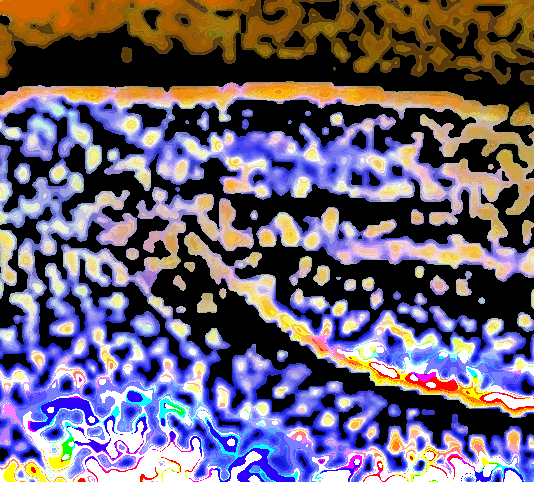
Minoan ceramics |
- Minoans built trade routes and a mercantile society
and were experts at travel.
- They traded goods like
ceramics, gold and silver, timber, wood products, and spices
like saffron.
- The Minoans were accomplished metalworkers.
- Natural
disasters and a volcano weakened the Minoans and gave rise to
the Mycenaean civilization.
- The Mycenaeans developed war
strategy and battled their way across the area to overtake
them and build war fortresses.
The Minoan civilization developed from the local Neolithic culture around 3100 BC, with complex urban settlements beginning around 2000 BC. After c. 1450 BC, they came under the cultural and perhaps political domination of the mainland Mycenaean Greeks, forming a hybrid culture which lasted until around 1100 BC.
(Wikipedia)
|
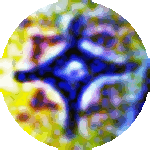
Cypriot syllabary |
- The Minoans of ancient Crete spoke a language which
appears unrelated to any known language family, and is still
unclassified.
- This
language first employed visual hieroglyphs and then later, a
syllabary called Linear A was developed.
-
Mycenaean language was used in Mycenae and Crete from
1100-1600 BC.
- The Mycaenean civilization spoke Greek and adapted the Minoan Linear A
and produced their own syllabary called Linear B.
- Unlike Linear A, Linear B (Mycenae Greek) has been successfully deciphered
for quite some time.

Symbolic
language |
- Linear B script, a pre-Hellenic
language, was invented on Crete in the 14th century BC and
later spread to continental Greece.
- The 88 syllable
Linear B and was inherited by Greeks from Linear A, another
Cretan script of unknown origin.
- The Linear systems were
in use several centuries before the Greek language.
- Both are considered
pre-Greek and after time passed, Linear B was no longer used
to encode Greek.
- The Greeks instead borrowed the
Phoenician system of writing and subsequently developed a true
alphabet.
The people of Greece were particularly influenced by Minoan culture. They built palaces of their own in places like Pylos and Tiryns, and also adopted the Linear B writing system.
(kinnu.xyz)
|

Hieroglyphic Cretan
language |
- The mysterious 'Phaistos Disk' is a 4,000-year-old clay disk
that was discovered in 1908 in Crete.
- Scripts from
writing systems called Minoan Linear A and Mycenaean Linear B
came from ancient Greece.
- Ancient language inscribed on the disk, which dates back to 1700 BC
was recently decoded.
- The hieroglyphic Cretan language
on the disk can be read in a spiral direction from the outside rim to the inside.
- The words revealed were 'pregnant mother,' 'goddess' and
'shining mother.'
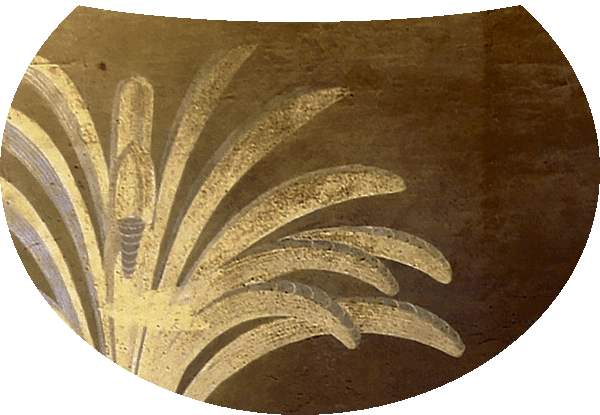
Kamáres ware |
- The
Minoans are known for their sophisticated art such as the
elaborate seals, pottery, including Kamáres ware with its light-on-dark style of decoration.
- Minoan pottery has been found in Egypt, Syria, Turkey and mainland Greece.
- Since the Minoans are the older culture they influenced
the Mycenaeans more than the other way around.
- The
Minoans were known for their free-flowing design, and had a
preference for marine and plant life.
They imported gold and silver, and began to craft intricate bracelets and necklaces, as well as finely decorated weapons. The Minoans were a resourceful society, but a creative one too, which encouraged visual arts.
(kinnu.xyz)
|
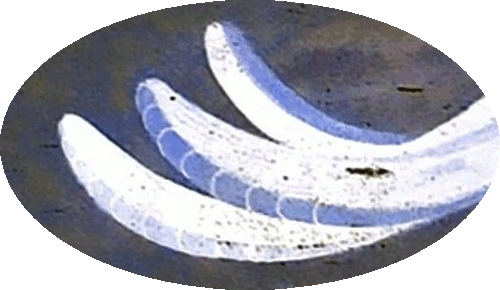
Octopus |
- In contrast, the
Mycenaeans had a geometric style, although, they
incorporated common Minoan motifs such as the octopus into
their artwork.
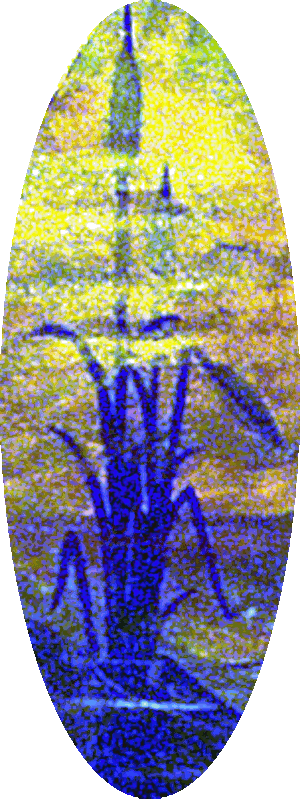
Garden scenes |
- Minoans are also know for their beautiful frescoes and
their favorite symbology included monkey's, wild goats and
garden scenes.
- Their artwork was unique and highly
expressive for the period.
- Minoans used vivid, violent colors, often using these colors to differentiate between gender: men were
painted in red-brown, and women were snow white.
- The
most known frescoe is called 'Prince of the Lilies' and
shows a male figure with reddish skin wearing an extravagant
headdress.
- Cretan frescoes were
highly influenced by the Egyptians.
Among the most familiar motifs of Minoan art are the snake, symbol of the goddess, and the bull; the ritual of bull-leaping, found, for example, on cult vases, seems to have had a religious or magical basis.
(britannica.com)
|
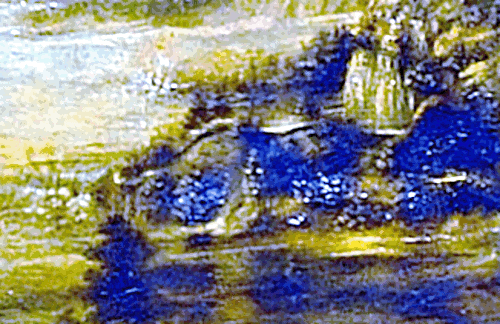
Palace in Crete |
- Palace centers in Crete were not palaces but were a
center of administrative business and religious activity.
-
Knossos was the largest of the main sites and the only one
that retained its grandeur after widespread destruction 1700
BC.
- The cause of destruction is still not understood.
- The Minoans did not fortify their palaces which
showed they were a peaceful people.
The Minoans erected extravagant palaces in their major cities. Five have been discovered so far, with the largest at the city of Knossos. The palace at Knossos is thought to have been built not long after 2000 BCE; it had an impressive courtyard for hosting events, as well as several storeys of passages and chambers: workshops, shrines, bedrooms.
(kinnu.xyz)
|
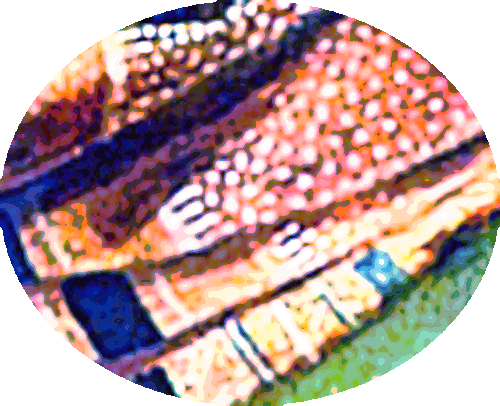
Redistribution of
goods |
- Mycenaean palatial centers were similar to the Minoan,
but were smaller and heavily fortified and far from the city
center.
- They were used primarily for storage of oils and
grains and contained centralized market spaces for
redistribution of goods.
The construction of these grandiose buildings demonstrates the structure of Minoan society. Great wealth and power must have been centralized in the hands of a ruling class, as is often the case in highly advanced societies.
(kinnu.xyz)
|

Greece and its
islands |
-
By 1580 BC Minoan civilization began to spread across the Aegean to neighboring islands and to the mainland of Greece.
- The Mycaenean civilization itself fell around 1100 BC and
a two century long dark age of absolute illiteracy descended upon Greece and its islands.
At Knossos and Phaistos, evidence suggests that an
earthquake may have caused their destruction, but at
other palaces, there is evidence of violent
destruction – charred beams and broken pottery –
suggesting that these sites were the victims of
foreign invaders.
(kinnu.xyz)
|

Mycenaeans burial jars |
- Minoans buried their elite in large burial jars
called pithos and constructed beehive (tholos) tombs.
- The discovery of multiple bodies in one burial jar exhibits the Mycenaeans' adoption of and
subsequent deviation from the Minoan burial practice.
- However, burial goods from the Mycenae shaft graves showed a
close relationship to Minoan trade.
The sun rises, and the sun goes down, and hastens to the place where it rises.
(Ecclesiastes 1:5)
|
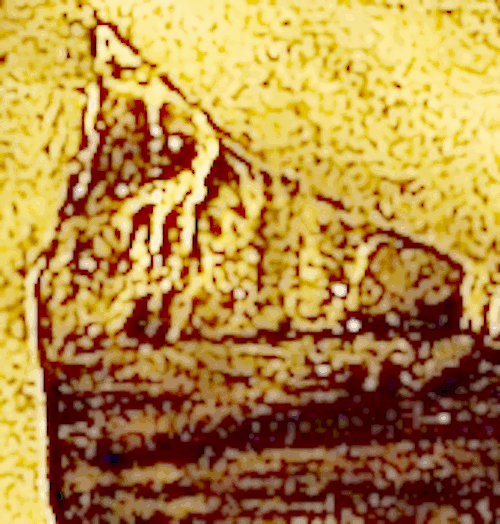
Minoan cave worship |
- Minoan religious practices are a mystery however,
some facets have been revealed through art, frescoes, seal
stones, and signet rings.
- They participated in feasts,
processions and had a ritual event called bull-leaping.
-
The sacred knot, horns of consecration, and the double axe are
religious symbols that were discovered in religious
sanctuaries and at burial sites.
- Minoans built sanctuaries to practice their religion in caves and on mountaintops.
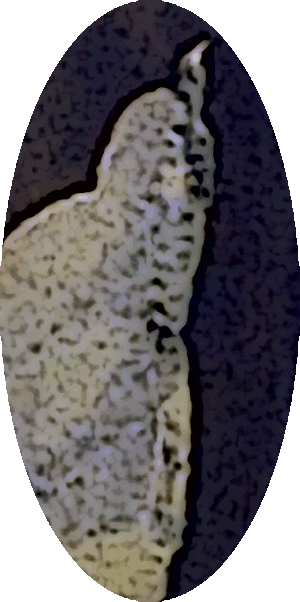
Minoan Snake Goddess |
- Minoan depictions of priestesses and women
performing religious rituals as well as numerous ivory
carvings of a deity given the name of the Snake Goddess,
although her true name is unknown.
- This shows that the
dominanance in the Minoan pantheon was a female one and her
symbol was the double axe.
- Representatons of the goddess
have been found in murals, rings and seals and even on
mainland of Greece.
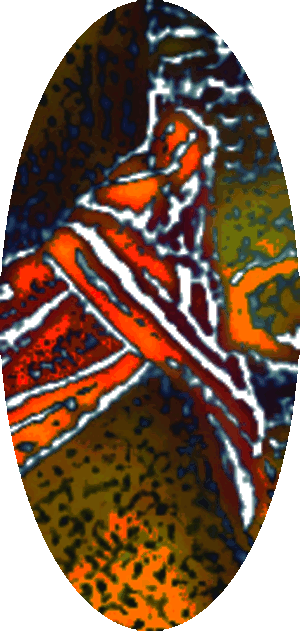
Bull-leaping |
- A favorite subject in Minoan frescoes is bull-leaping: acrobatic humans
(both male and female) leaping over the horns of a charging bull and then vaulting onto its back.
- As a culture, they venerated bulls, which they may have associated with strength or fertility.
- This is further evidenced by archaeological finds such as bronze figurines depicting bulls' heads or horns.
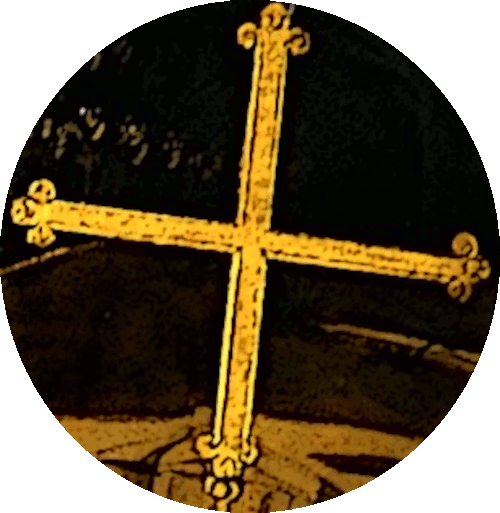
Greek religion |
- Not much is known about the religion of the Mycenaeans
since much of their use of Linear B script was used for
economic and administrative records.
- The Mycenaeans spiritual practices were more aligned
with ancient Greek religion.
- They made burnt offerings to their gods, whereas the Minoans did not.
There is neither Jew nor Greek, there is neither slave nor free, there is no male and female, for you are all one in Christ Jesus.
(Galatians 3:28)
|

Herme's petasos |
- They did adopt the
double axe but it's not known if it was for the same religious
purpose as the Minoans.
- Mycenaean religion is considered the mother of the Ancient Greek religion.
- There are some Linear B tablets
that mention some of the same gods venerated by the Greeks who
came after them, including Poseidon, Artemis, Hermes, and
Zeus.
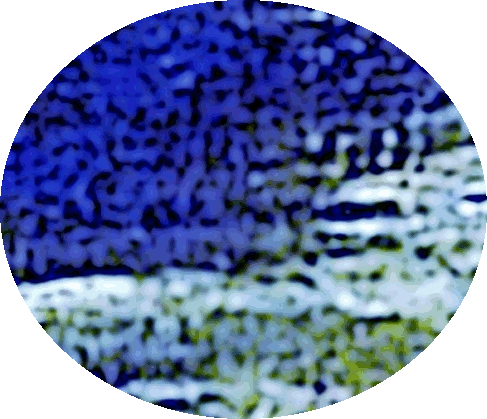
The Helper
in Crete |
- The Minoan civilization eventually declined due to a combination of natural disasters and foreign invasions,
events which mirrored the destruction of their palaces hundreds of years earlier.
- It is theorized that an eruption of Thera, and island
volcano not far from Crete, was the major cause of their
destruction
- The volcano was thought to be one of the most
powerful in history with an ash cloud seen as far away as
Egypt.
But the Helper, the Holy Spirit, whom the Father will send in my name, he will teach you all things and bring to your remembrance all that I have said to you.
(John 14:26)
|
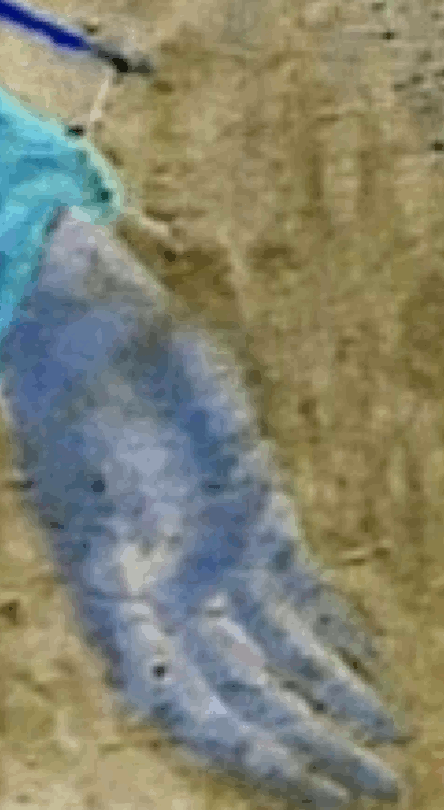
Sandy
Signed by Leonardo DaVinci |
|
|

